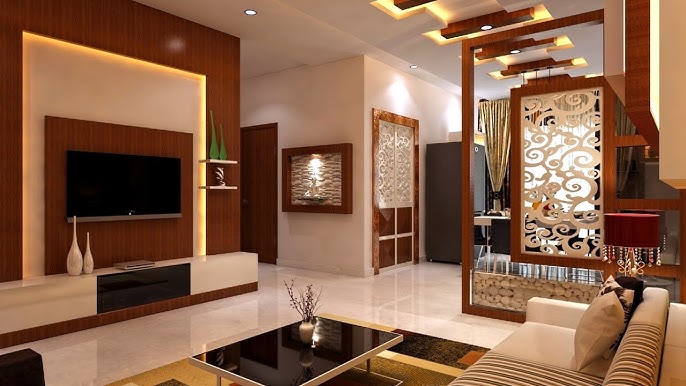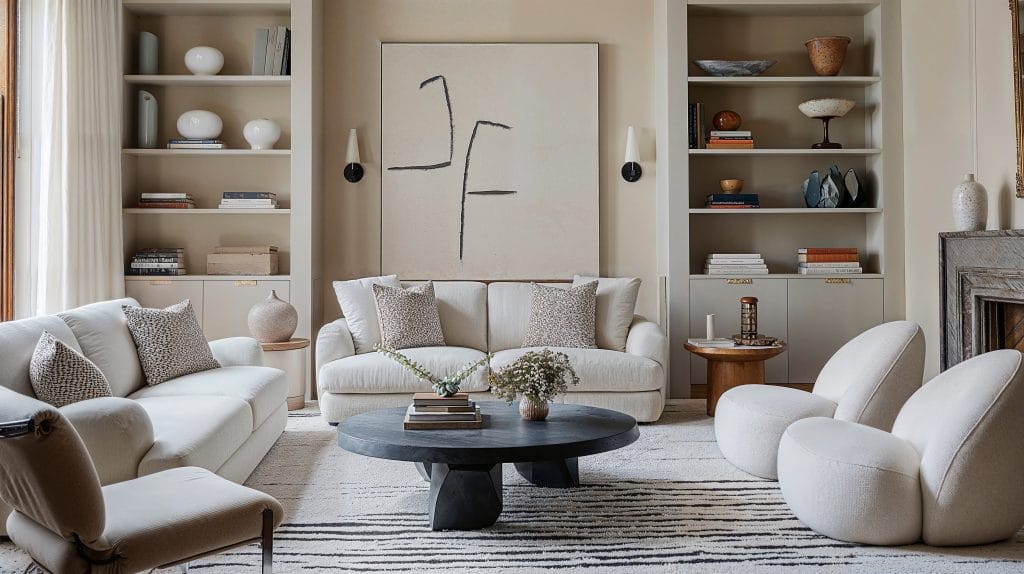Work with expert interior design firms for a customized aesthetic.
Work with expert interior design firms for a customized aesthetic.
Blog Article
Transform Your Home With Vital Concepts of Inside Layout and Appearances
By understanding the impact of shade theory and the significance of appearance and patterns, one can develop areas that are not just aesthetically enticing however additionally deeply personal. Achieving this balance includes even more than plain decoration; it includes a critical arrangement and a keen understanding of how each aspect connects within a room.
Understanding Color Theory
Recognizing the concepts of color concept enables developers to create spaces that reverberate emotionally with residents while meeting useful needs. Each category plays a crucial role in establishing consistency within an area.
The psychological impact of shades is extensive; warm colors such as reds and oranges stimulate power and warmth, while amazing tones like blues and eco-friendlies promote calmness and tranquility. Moreover, the usage of corresponding shades boosts aesthetic passion, producing striking contrasts that can boost an area's charm.
Neutral colors, on the other hand, function as a versatile backdrop, allowing various other style elements to beam. It is crucial to think about factors such as illumination and the area's function when choosing a shade palette, as these can change the perception of shades throughout the day.
Eventually, a well-considered color design can transform a room, promoting a feeling of comfort and style that aligns with the occupants' choices. Proficiency of shade concept is, for that reason, an important skill for any indoor designer intending to develop harmonious and welcoming atmospheres.
Attaining Equilibrium in Style
Exactly how can designers accomplish a feeling of stability in their rooms? Accomplishing balance in style is fundamental to creating harmonious insides. Developers can use three primary kinds of balance: balanced, asymmetrical, and radial. In proportion balance entails setting up components uniformly around a central point, fostering a sense of order and serenity. This kind typically includes sets of furnishings or art work, enhancing visual stability.
Asymmetrical balance, on the other hand, counts on varying aspects that still attain a cohesive look. This strategy enables even more vibrant and casual arrangements, offering passion while maintaining stability. By carefully selecting varying dimensions, shades, and structures, designers can produce a visually engaging room that feels balanced yet energetic.
Radial equilibrium emphasizes a main prime focus with elements radiating external. This style is commonly seen in round designs, where furniture and design create a natural surround that attracts the eye inward.
Eventually, attaining balance needs thoughtful consideration of scale, percentage, and the partnerships between components. miami interior design. By masterfully applying these equilibrium concepts, designers can change spaces into settings that really feel both cosmetically pleasing and functionally unified, enhancing the total experience for occupants
Significance of Spatial Understanding

An eager feeling of spatial recognition enables developers to determine prime focus within a space, guiding the viewer's attention to key attributes while keeping an overall feeling of unity. It likewise helps in the tactical placement of lighting, which can significantly influence the perception of space and state of mind. Moreover, recognizing spatial connections allows the designer to provide to the particular needs of residents, making sure that each location offers its intended purpose without compromising anchor aesthetic appeals.
Inevitably, spatial understanding is essential for optimizing the potential of any kind of indoor room. By meticulously thinking about the interaction between dimensions, layout, and feature, developers can produce environments that not only satisfy useful needs but likewise stimulate a sense of comfort and beauty, improving the overall living experience.
Integrating Texture and Patterns
Embracing a diverse series of appearances and patterns can substantially boost the aesthetic and tactile charm of an indoor space. The tactical use numerous products-- such as wood, steel, textile, and stone-- produces deepness and rate of interest, making a space feel more welcoming and dynamic. Integrating smooth surface areas with rough textures can develop an equilibrium that attracts the eye and engages the detects.
When incorporating patterns, consider both scale and repetition. Huge patterns can work as centerpieces, while smaller, subtle layouts can match various other components without overwhelming the space. Layering patterns, such as pairing floral pillows with candy striped throws, adds intricacy and a feeling of harmony find this if performed thoughtfully.
It is likewise essential to keep a natural color palette, guaranteeing that appearances and patterns collaborate as opposed to compete for focus. By picking a couple of key structures and patterns, you can develop a linked aesthetic that mirrors your personal style while enhancing the overall setting of the room. Ultimately, the careful unification of these aspects can transform a mundane space into a sophisticated environment abundant with character and warmth.
Individualizing Your Space
Creating an area that shows your personality is important to accomplishing a really welcoming setting. Personalization in interior decoration allows you to infuse your unique design and interests right into your home, changing it from a plain sanctuary right into a sanctuary that speaks with who you are. Begin by picking a shade palette that resonates with your emotions-- bold colors can invigorate, while soft tones provide tranquility.
Incorporate artwork and decor that reflect your passions, whether it be travel, nature, or abstract ideas. Presenting individual collections, such as publications, pictures, or mementos, can stimulate cherished memories and develop focal factors within an area. In addition, take into consideration customizing practical pieces, like upholstered furnishings, to line up with your aesthetic choices.

Final Thought
Finally, the transformation of a home with the essential principles of interior decoration and looks necessitates a comprehensive understanding of shade concept, equilibrium, spatial recognition, appearance, and personalization. Each element contributes considerably to creating an unified and functional living atmosphere - Architecture Firm. By attentively integrating these principles, people can enhance the aesthetic charm and psychological vibration of their rooms, ultimately cultivating a home that shows distinct identities while offering comfort and functionality
Report this page